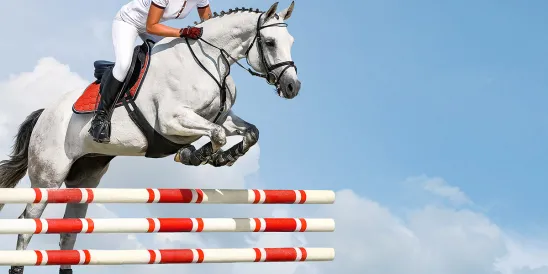The equine industry’s growth over the years has increasingly intersected with technology and innovation. From advanced breeding methods to hi-tech equipment and health care, the scope of innovation within this sector has expanded significantly. Utility patents can be used to protect these innovations, and understanding their use and requirements is crucial for breeders, trainers, and other industry stakeholders.
In the United States, utility patents are issued for the invention of a new and useful process, machine, manufacture, or composition of matter, or a new and useful improvement thereof. U.S. law requires that the invention must be novel, non-obvious, and useful. The novelty requirement necessitates that the invention hasn’t been previously disclosed in a patent or published document. Non-obviousness means the invention can’t be an obvious development to a person of ordinary skill in the art. The usefulness criterion, meanwhile, necessitates that the invention has a specific, credible utility.
The equine industry, with its diverse sectors ranging from equine equipment production to horse breeding, to health care, to horsing operations, has several areas where utility patents come into play.
Equine equipment and devices are primary areas where utility patents can play a significant role. New and improved designs of horse bridles, saddles, horseshoes, spurs, and equine medical devices can be patented, granting the inventor exclusive rights over these innovations. For example, innovations in saddle design for enhanced rider comfort, or a novel bridle that improves horse control, can meet the requirements for a utility patent. Similarly, advancements in equine medical devices, such as new diagnostic or therapeutic tools, can also be patented.
In equine breeding, innovations in genetic selection processes, artificial insemination methods, or embryo transfer techniques may also be patentable. Inventions relating to nutritional compositions or supplements for horses or diagnostic tools and therapies for equine diseases also fall within this purview. For instance, if a breeder develops a unique, non-obvious method to select traits in thoroughbred horses that significantly improves the breeding process, such as by increasing breeding efficiency or enhancing genetic selection, they could potentially apply for a utility patent.
However, it is important to note that while processes can be patented, naturally occurring genes or purebred animals cannot be, as they fall outside the “novel” and “non-obvious” requirements. Patenting in this space is a delicate balance and requires careful navigation of ethical considerations and current patent law.
Finally, innovations in horsing operations can also be covered under utility patents. For example, a new training method using a unique apparatus, a distinctive method for maintaining horse health, or a novel process for managing equine waste could potentially qualify for a utility patent.
To obtain a utility patent, detailed application including an abstract, a specification, one or more claims defining the invention, and any necessary drawings must be submitted to the United States Patent and Trademark Office (USPTO) for examination. If the USPTO’s patent examiner finds that the invention meets all requirements, the patent is granted, giving the owner the exclusive right to use, manufacture, and sell the invention for up to 20 years from the filing date, and protecting the commercial value of their innovation.
The equine industry is not confined to U.S. boundaries, however, and inventions made in one country may have applicability and commercial potential in others. The Patent Cooperation Treaty (PCT), an international treaty that offers a unified procedure for filing patent applications in its contracting states, simplifies the process of seeking patent protection in multiple jurisdictions.
While a PCT application does not directly result in the grant of an international patent (the grant of a patent remains under the control of the national or regional patent offices in what is called the “national phase”), it allows a single patent application to be effective in individual PCT contracting states. The application then undergoes an international search and preliminary examination, providing a report on the invention’s potential patentability. This unified procedure simplifies the process of seeking patent protection in multiple countries by delaying the need to file separate applications in each jurisdiction. This mechanism allows innovators in the equine industry to protect their inventions on a global scale, helping them maintain a competitive edge in a highly globalized market.
The utility patent system is not without its critics. Concerns exist over issues like ‘patent trolls’ or the monopolization of genetic resources in equine breeding. Notwithstanding these concerns, utility patents remain a key tool for fostering and protecting innovation in the equine industry.
In conclusion, utility patents are a valuable asset in the rapidly evolving equine industry. Whether for equine breeding, health care, or equipment, these patents provide innovators with a mechanism to protect and capitalize on their inventions. Understanding the requirements for obtaining patents, both under U.S. law and the PCT, is thus crucial for anyone involved in horse breeding and horsing operations, particularly as the industry continues to grow and adapt to new technologies and practices. By understanding and leveraging this intellectual property right, stakeholders in the equine sector can protect their inventions, foster advancements, and ultimately contribute to an evolving and vibrant industry.



 />i
/>i
